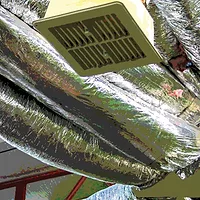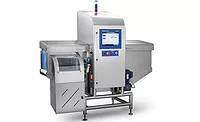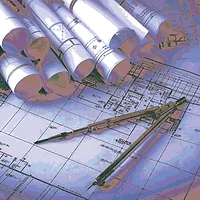Validation, Verification, and Monitoring of Cleaning in Food Processing Factories

My intention for this article is to give an overview of cleaning validation, verification, and monitoring. These activities are contingent upon Sanitation Standard Operating Procedures (SSOPs) having adequate detail to achieve their specific objectives. Unfortunately, many SSOPs do not cover all the important equipment, are “copy and paste” between different equipment, are buried in binders or databases, and are dusted off only during audits so a box can be checked. Does any of that sound familiar to you? Cleaning validation cannot be meaningful without a stable cleaning process. In other words, it is critical that cleaning designed to mitigate a food safety risk has SSOPs that, when followed, generate predictable and repeatable success. Without this stable cleaning process, the execution, monitoring, and verification of cleaning will have a lot of variability. Can your factory really afford that?
To reduce confusion in this article, I offer my definitions of cleaning validation, verification, and monitoring as they apply in food manufacturing factories. Additionally, the article will touch on:
• Which equipment needs to have validated cleaning
• The impact of sanitary design of equipment and surrounding areas on validation
• Setting success criteria for cleaning validation
• Creating SSOPs
• Establishing monitoring routines
• Creating and conducting cleaning validation
• Some best practices for conducting cleaning verification
Definitions
Differences exist in the definitions of cleaning verification, monitoring, and validation. For the purposes of this article, I will define these as “past, present, and future,” respectively.
Let’s start with verification. I consider this as the process by which an evaluation is made of whether an SSOP has been working as designed (in the past). This could include review and trending of cleaning success criteria results and preoperational check failures (aka “recleans”), environmental monitoring results, and consumer complaints attributed to ineffective cleaning. I think of cleaning verification as, “Has the performance of the SSOP delivered the desired results in the past?”
Continuing with the definitions, I consider monitoring as the real-time observations and measurements of the execution of an SSOP (in the present). This could include readouts from devices, visual inspections, and observations of the execution of procedures. If a failure in procedure execution will be corrected before production operations, I would consider the process that detected the failure as monitoring. Thus, rapid-testing methodologies, like adenosine triphosphate (ATP) tests, general protein or allergen tests, etc., would also be considered monitoring. I think of cleaning monitoring as, “Is the SSOP being followed and is it delivering the desired results in the present?”
Finally, the definition of validation is the determination of whether an SSOP, when followed, is capable of delivering the established and mutually agreed upon success criteria (in the future). The focus of validation must be on the repeatability of the SSOP and the predictability of the cleaning outcome. It should not be a validation of the performance of an individual. I think of cleaning validation as, “Is the SSOP, when followed, able to deliver the desired results in the future?”
What Equipment Must Have Validated Cleaning and Which Should Be Addressed First?
Which of the many pieces of equipment in a food manufacturing factory need to have a validated cleaning process, and what criteria should be used for prioritization? The answer is, “It depends.”
If the cleaning mitigates a food safety risk, this cleaning process must be validated. For example, in a ready-to-eat factory with a validated lethality step, the post-lethality food-contact equipment must have a validated cleaning process. Cleaning processes that have not been validated could allow variability and possible contamination of the product. This equipment, due to the risk, needs to be addressed first.
What if we were to look at the prelethality food-contact equipment in the same scenario as above? Does this equipment need validated cleaning processes? Again, the answer is, “It depends.” Here are some considerations:
• Is this cleaning mitigating an identified food safety risk?
• Could contamination of the product create a microbial load that a validated lethality step could not reduce to an acceptable level?
• Would foreign material or product accumulations create a food safety risk?
• Will the factory be able to justify the decision of whether or not this cleaning process needs validation?
In most cases, the selection and prioritization of equipment for cleaning validation is a factory-level decision. These decisions should be made in a defensible manner as well as approached consistently and pragmatically. Should palletizers, case erectors, forklifts, and the break room have validated cleaning processes? Probably not. The point is, just because a cleaning process has an SSOP does not automatically mean the SSOP needs validation.
The factory food safety team needs to be aligned with the cleaning validation process. They should use the factory’s Hazard Analysis and Critical Control Points (HACCP) risk assessment as a guide to select and prioritize their equipment for cleaning validations. The factory would be wise to also consider the following:
• Industry best practices
• Possible regulatory requirements
• Quality system requirements
• Corporate policy
• Other quality attributes
Sanitary Design and Cleaning Validation
The ability to clean new or existing equipment depends heavily on whether the equipment is capable of being adequately cleaned. Conducting a sanitary design evaluation is highly recommended. Numerous sanitary design evaluation checklists and criteria exist. These evaluations should be conducted on the equipment to be validated as well as on the area where the equipment resides. This is because great equipment in a poorly designed room, or vice versa, most likely will not provide long-term success. Gaps affecting cleanability identified in sanitary design evaluations should be addressed in the SSOPs until they can be corrected through engineering solutions.
Setting Cleaning Success Criteria
To set criteria for cleaning outcomes, one must first answer the question “Why are you cleaning?” Oftentimes, the answer is not fully understood. The second question to ask is, “How clean do you need to get it?” The answer to this second question can spark interesting and engaging discussions depending on the audience.
Two critical reasons exist for cleaning in a food manufacturing factory. All people in quality roles would agree that one reason is to mitigate food safety risks. Yes, you read that correctly; one of two critical reasons. The other critical reason, in my deeply held opinion, is to mitigate employee safety risks in the factory. While the intent of this article is not to discuss employee safety in food manufacturing environments, suffice it to say unsafe conditions caused by improper cleaning must be immediately corrected and preventive measures implemented to keep those conditions from recurring.
Food safety risk mitigation is the most widely understood reason for cleaning. This is because it is this cleaning that protects your consumers, products, and brands. In most instances, this cleaning focuses on microbiological reduction and/or allergen management. The factory’s HACCP program will identify the product risks and the mitigations that control them. Cleaning will probably be one of several preventive control strategies.
Numerous other reasons to clean most likely exist. The following is a list of other reasons to clean for consideration in a factory’s sanitation program:
• Product accumulations affect line efficiencies as clean equipment typically runs better and with fewer unplanned line stoppages
• Product accumulations left on equipment for extended times can be reintroduced into the product stream
• Product accumulations create growth media for specific spoilage organisms (affecting shelf life)
• Environmental pathogen growth and movement
• Integrated pest management
• Employee morale is negatively affected by unclean conditions
The factory stakeholders must discuss and agree on all the cleaning objectives. The stakeholders should include operations, sanitation, quality assurance, maintenance, engineering, equipment manufacturers, and cleaning chemical suppliers.
Once stakeholders jointly agree upon why they are cleaning, they can begin setting the criteria for successful cleaning. The criteria for cleaning success answer the question, “How clean does the equipment need to be?” Important input comes from the associates who will ultimately perform the tasks, as they are often the true experts. Each of the stakeholders brings to the discussion insights that drive meaningful, value-added, and pragmatic criteria. Without stakeholder agreement, variability of results will surely follow. These success criteria may include any of the following:
• Visual cleanliness (pictures help for comparison of the standard to actual observations)
• ATP readings
• General protein tests results
• Specific allergen protein tests results
• Counts of microbiological organisms
• Compliance with label claims like non-GMO, gluten-free, kosher, halal, etc.
This article is not intended to explore these individual success criteria. More information is available for each of these through a number of sources, including the suppliers of the testing supplies, industry and trade associa-tions, regulatory agencies, and academia.
Creating SSOPs
At this point, the factory has determined what equipment needs to have validated cleaning, why the factory is cleaning, and how clean the equipment needs to be. Now the SSOP can be designed to predictably deliver the success criteria.
The stakeholders should again collaborate in the design of the SSOPs that, when followed, will deliver these predictable and repeatable success criteria. The factory is limited only by its imagination on how to deliver this level of detail. Any combination of text, pictures, and videos can describe the cleaning process and the desired outcome. A suitable SSOP will include the following:
• Safety-related topics and concerns
• Cleaning supplies and equipment needed
• Tools and equipment management, reconciliation, and sanitary condition
• Cleaning chemicals and their concentrations, temperature, and contact time
• Step-by-step sequences of activities with thorough detail
• Detailed descriptions of hard-to-reach and hard-to-clean areas
• Areas of the equipment needing special attention
• Detailed descriptions of cleaning success
• What to do if the procedure cannot be followed as written
Detailed SSOPs become the foundation for training associates performing the cleaning activity. This will be important in demonstrating the qualification of the individuals performing these tasks during quality system certifications, internal audits, and regulatory inspections.
The documentation of cleaning activities must also be considered during the creation of the SSOP. Understanding what needs to be documented for the factory quality system and applicable regulatory requirements is important.
Establishing Monitoring Routines
Monitoring the results of cleaning becomes more predictable when the SSOP has adequate detail, especially in describing success. Results become more objective and troubleshooting failures becomes easier. The associate’s supervisor and the quality assurance group will become monitors of the procedure rather than the evaluators of the associate’s performance. Monitoring failures becomes a question of “Why didn’t the procedure deliver the desired results?”
Results of the procedure should be monitored in real time with meaningful criteria and pass/fail parameters. Clean-in-place should have constant monitoring of parameters such as temperature, time, flow/pressure, conductivity/pH, etc. The associate performing manual cleaning should be looking for visual cleanliness. Other objective tests can be employed in real time such as ATP, and general and specific protein tests. Many of these monitoring measures, when properly recorded, become excellent documentation of cleaning.
Creating and Conducting Cleaning Validation
With highly detailed SSOPs, conducting the validation is relatively simple: just watch the associate and compare what they do with what is written in the SSOP. If there is any discrepancy, stop and correct the behavior or go through the established factory process of changing the SSOP. Only when the procedure is followed as written should the results be compared with the success criteria.
The objective should be to try to make the validation fail. Yes, that’s what I said. Try to make the process fail. This will give defensible assurance of predictable and repeatable success. Consider evaluating against the worst-case scenarios, including:
• The hardest-to-clean product
• The hardest-to-reach areas
• The longest-possible production schedule
• The shortest allotted time for cleaning
• The least experienced associate
• Cleaning on different shifts
Grouping of “like” equipment for validations is perfectly acceptable, very efficient, and should be encouraged. Ultimately, the decision of what constitutes “like” is up to the factory and must be defensible. The food safety team should be involved in this decision. For example, if the factory has multiple packaging lines with identical wrappers that run on the same schedule, package the same product, and have the same SSOP, then validating one of these lines will be indicative of all of them.
How many trials should be conducted when validating SSOPs? One trial would be a poor sample size. I highly recommend three consecutive successful trials and have never had this challenged.
Under what circumstances should revalidation occur? Well, that depends. Generally speaking, when something significant changes, or when the validation fails, revalidation becomes necessary. Significant changes may include:
• Formula changes (harder to clean, introduction of a new allergen, a new label claim, etc.)
• Scheduling of longer production runs
• Shortening of time for cleaning
• Equipment modifications or additions
• Monitoring trends demonstrating failures
• Changing cleaning chemicals
• Changes to the SSOP
• More-difficult-to-achieve success criteria
The food safety team and management of change process should govern the decision and consider cost/benefit of changes versus revalidation.
Besides predictable and repeatable results, having detailed SSOPs allows for controlled process improvements when these go through the factory’s management of change process. Cost savings and sustainability improvements, such as reducing cleaning time, chemical and water usage, water temperature, etc., can happen only when the current process is under control by the SSOP. Such changes to the SSOP must be evaluated to determine whether cleaning outcomes will be negatively affected.
Verifying Your Validated Procedures
Factory quality systems generally require verification of preventive controls at least annually. Because cleaning that mitigates food safety risks is considered a preventive control, these validated cleaning processes need verification. Therefore, a formal annual verification of validated cleaning processes should be conducted and documented to ensure the preventive control is still working as designed.
The original validation was of an SSOP and was conducted to ensure the procedure would generate a predictable and successful result. A verification, therefore, would be a review to determine whether the procedure has been under control and has been consistently generating successful results. The following are just some of the records that could be included in a review:
• Post-sanitation/preoperation inspection data
• Preoperational checks
• Consumer complaints
• Environmental pathogen monitoring data
In addition to a records review, I strongly recommend verifications include conducting one trial of the original validation. This ensures the success criteria are still being delivered by the validated SSOP versus a procedure that was changed and not validated. A single trial demonstrates if anything affecting the original validation of the SSOP significantly changed and if the SSOP is still being followed as written.
Conclusion
Monitoring, verification, and validation will be difficult at best without control of the cleaning process. When there is poor control, monitoring of day-to-day cleaning success will probably depend on the variable opinions of individuals versus the variable performance of whoever completed the work that day. Verification activities will show these historically variable results. Finally, validation of cleaning processes that are not under control is meaningless because there is little consistency. Variability is the enemy. Is your factory losing this fight with variability in the cleaning process? The best way I know to combat this is to have validation, verification, and monitoring of cleaning based on detailed SSOPs, which, when followed as written, are capable of predictably and consistently delivering mutually agreed upon success criteria.
Duane Grassmann is the corporate hygiene manager at Nestlé USA.
Looking for quick answers on food safety topics?
Try Ask FSM, our new smart AI search tool.
Ask FSM →








